When you buy through our links, we may earn a commission. Products or services may be offered by an affiliated entity. Learn more.
Twin mattresses are the smallest of the six mattress sizes. They’re popular for children and college students in dorms, and can also be a good choice for adults under 6 feet tall who sleep alone.
Sometimes called single beds, twin mattresses offer a number of unique advantages. They are generally less expensive than other sizes, and bedding supplies and frames tend to cost less as well. Additionally, twin mattresses help save space in small rooms, and they’re easy to move. They also fit most bunk beds.
Our Top Picks
-
Best Overall – Helix Midnight
View Details
-
Best Value – Nectar Mattress
View Details
-
Most Comfortable – Bear Original
View Details
-
Best for Side Sleepers – Nolah Signature 12
View Details
-
Best for Back Pain – WinkBed
View Details
-
Best for Kids – Saatva Youth
View Details
-
Best for Bunk Beds – Dreamfoam Essential
View Details
-
Best Dual-Sided – Layla Hybrid
View Details
-
Best Organic – Birch Mattress
View Details
-
Best for Guest Rooms – Siena Memory Foam Mattress
View Details
Swipe for more
Best Overall
Helix Midnight
9.1 /10
Test Lab Score
Up to 30% off + 2 free pillows
Up to 30% off + 2 free pillows
The Helix Midnight is a standout twin-size hybrid suitable for adults and children alike. Foam layers create a plush surface especially well suited to side sleepers, while sturdy coils ensure a stable, supportive base. Thanks to the approachable sticker price, the Midnight should also appeal to budget-conscious shoppers.
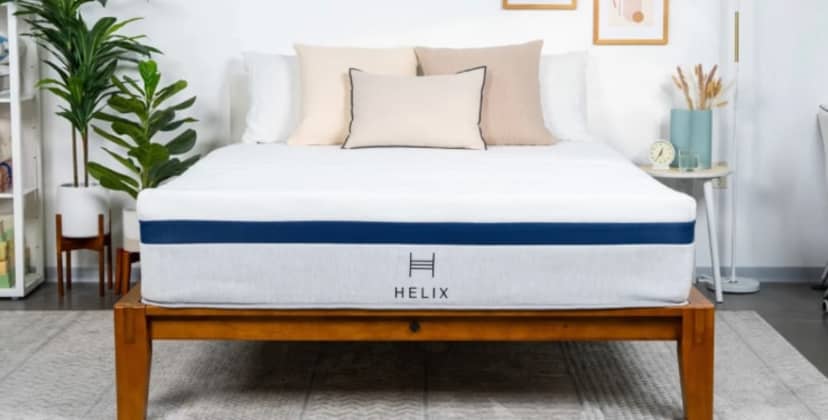
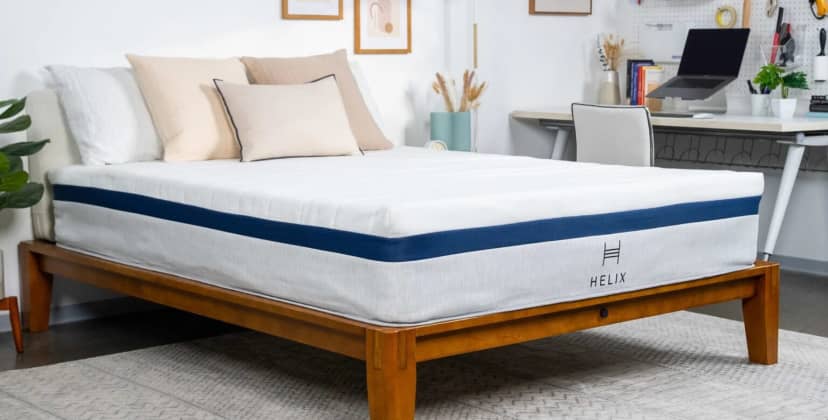
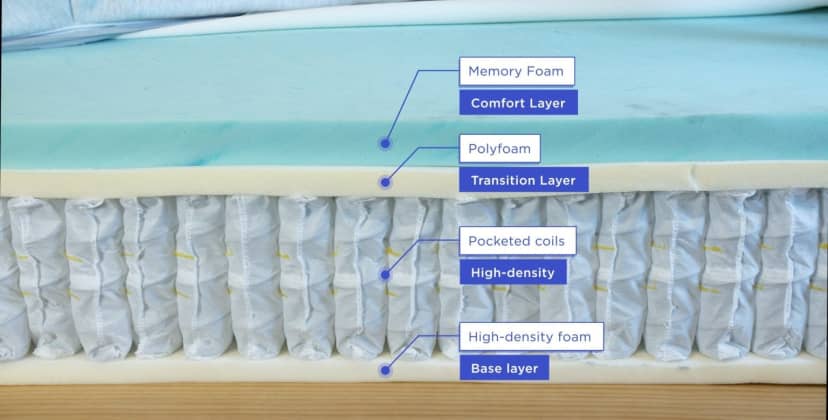
Price
$1,099
Mattress Type
Hybrid
Firmness Options
Medium Firm (6)
Trial Period
100 nights (30-night requirement)
Full Details
Who It’s Best For
Although the Midnight was originally designed with side sleepers in mind, the balanced construction should also be a good match for back and stomach sleepers up to 230 pounds.
Feel
The Helix Midnight’s medium firm (6), foam-over-coil design delivers plush contouring on the surface with sturdy support and a mellow bounce when you get in and out of bed.
What It’s Made Of
The Helix Midnight is a hybrid mattress with memory foam and polyfoam comfort layers. Steel coils encased in soft fabric and high-density base foam make up the support core.
What We Don’t Like
Despite its versatility, the Helix Midnight doesn’t give enough support to some sleepers weighing more than 230 pounds. The foam layers may also hinder movement on the surface.
Scoring & Reviews
The following ratings show how suitable this mattress is for different sleeping positions and sleeper weights. These scores are determined by how well the mattress supports and relieves pressure for each sleeper type.
We performed a meta-analysis on 6653 validated customer reviews of the Helix Midnight. This is what people who bought the mattress had to say:
- Comfort and Firmness: Many reviews mention the comfort level of the mattress, indicating it is generally well-received for its balance between firmness and softness.
- Heat Regulation: There are mixed comments regarding heat regulation, with some finding the mattress cool enough, while others still experience heat retention. We found the mattress to regulate temperature better than the average hybrid, but beds with foam comfort layers always run the risk of retaining body heat.
- Pain Relief: A common theme is the relief from back, hip, or shoulder pain, suggesting the mattress is effective for those with chronic pain or side sleepers.
- Durability Concerns: Some reviews express concerns about the mattress’s durability, noting issues like sagging or indentations over time.
- Sleep Quality: Numerous reviewers state that their sleep quality has improved, mentioning deeper sleep and less discomfort during the night.
- Edge Support: The edge support of the Helix received mixed reviews, but the overriding sentiment is that it’s firm enough to support your weight when sleeping near the edge. This backs up what we’ve found in our field and performance testing.
Best Value
Nectar Mattress
8.0 /10
Test Lab Score
Up to 40% off mattresses
Up to 40% off mattresses
Pressure-relieving construction and approachable pricing make the Nectar a high-value option for twin mattress shoppers. A generous year-long sleep trial further sweetens the deal for anyone who needs extra time testing out their new bed.
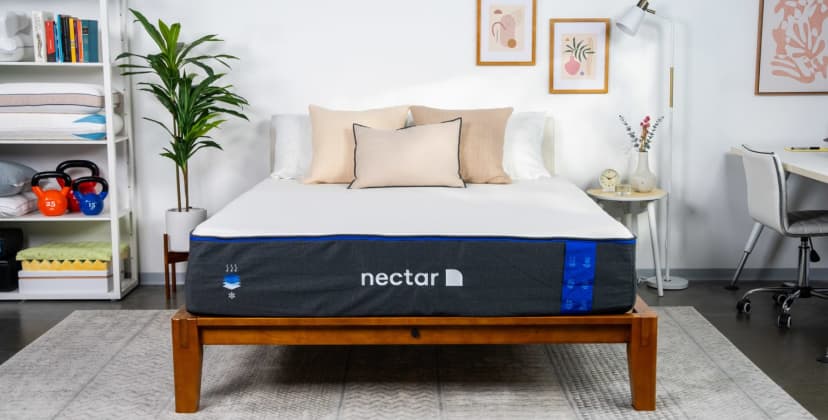
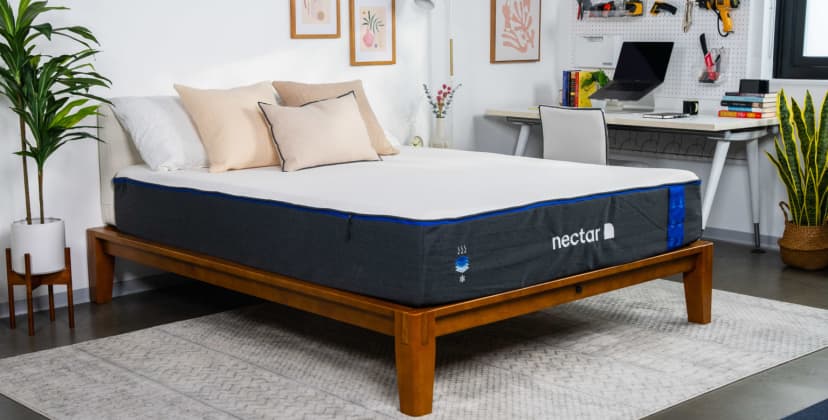
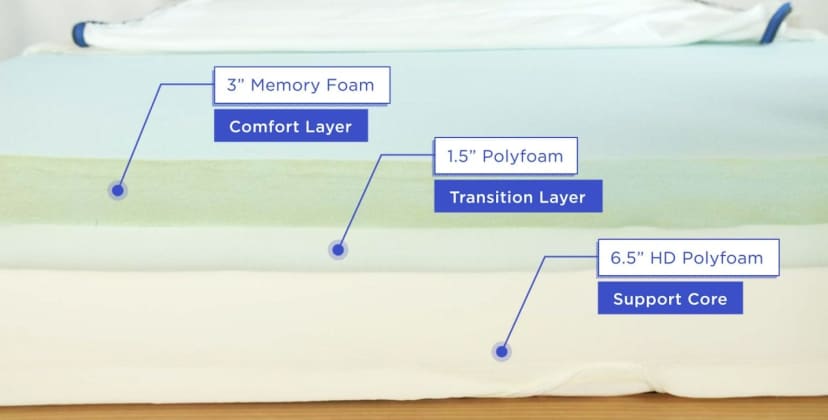
Price
$649
Mattress Type
Foam
Firmness Options
Medium Firm (6)
Trial Period
365 nights
Full Details
Who It’s Best For
The Nectar is best suited for side sleepers, even though back sleepers under 230 pounds may also find it comfortable. Couples should also enjoy the mattress for its superior motion isolation.
Feel
The Nectar feels very balanced thanks to plush memory foam beneath the surface and denser support layers that push back against your weight.
What It’s Made Of
The Nectar contains memory foam and transitional polyfoam layers over a dense foam base. Cooling gel infused in the top layer is meant to keep the mattress cool.
What We Don’t Like
The Nectar’s memory foam may lose shape within a couple years, resulting in an uneven sleep surface. Strong off-gassing odor can also occur when the bed is new.
Scoring & Reviews
The following ratings show how suitable this mattress is for different sleeping positions and sleeper weights. These scores are determined by how well the mattress supports and relieves pressure for each sleeper type.
We performed a meta-analysis on 10000 validated customer reviews of the Nectar Mattress. This is what people who bought the mattress had to say:- Pain Relief: Many users have reported significant relief from back, neck, and joint pain. The mattress seems particularly beneficial for those with chronic pain, contributing to better overall sleep quality.
- Free Accessories: Nectar often includes free pillows, mattress protectors, and sheets with the mattress, adding value and convenience for new customers.
- Suitable for All Weights: The mattress supports a wide range of body weights and sizes without losing comfort or stability, making it versatile for different users.
- Temperature Regulation: Several reviews indicate that the mattress does a good job of staying cool throughout the night, which is a significant benefit for those who tend to sleep hot.
- Customer Service: Positive remarks about Nectar’s customer service are common, with many customers feeling supported during the purchasing and setup process.
- Durability Concerns: While many users find the mattress supportive and comfortable, there are occasional mentions of durability concerns, such as sagging or indentations developing over time, particularly from heavier users.
Most Comfortable
Bear Original
7.5 /10
Test Lab Score
35% off + free pillows with code: SF35
35% off + free pillows with code: SF35
The Bear Original feels firmer and more supportive than the average foam mattress, making it a solid option for adults and kids who need extra reinforcement. Shoppers with limited budgets should also appreciate the approachable sticker price.
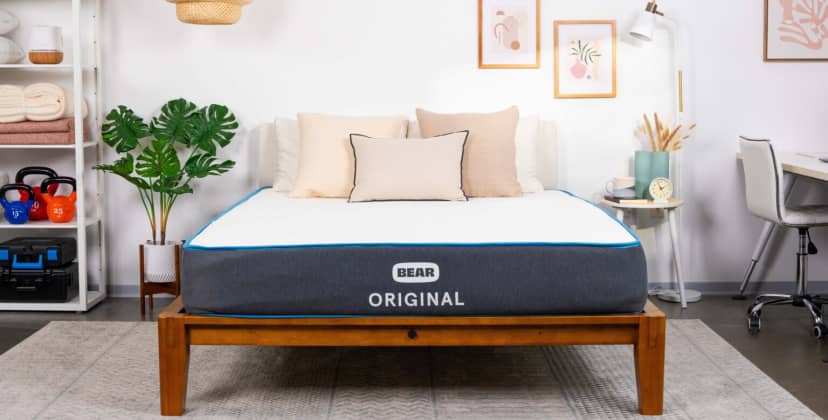
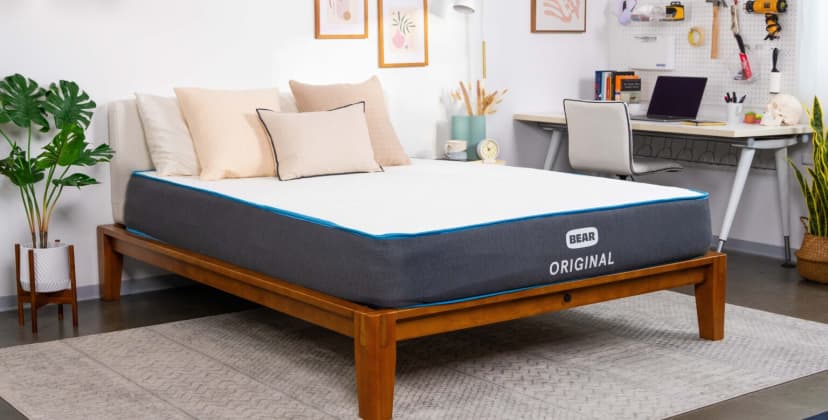
Price
$649
Mattress Type
Foam
Firmness Options
Firm (7)
Trial Period
120 nights (30-night break-in period)
Full Details
Who It’s Best For
Side and back sleepers who weigh at least 130 pounds should benefit from the Bear Original’s supportive all-foam design. The mattress also sleeps fairly cool and isolates motion for couples.
Feel
The Bear Original’s memory foam layer provides light contouring without too much hug. People who normally find all-foam beds too soft should receive plenty of support from this model.
What It’s Made Of
The Bear Original’s three-layer design includes plush memory foam on the surface, dense transitional polyfoam to keep your body on an even plane, and a dense base for extra stability.
What We Don’t Like
The Bear Original may feel too firm for people who need deep cushioning and contouring to sleep comfortably. Limited perimeter support can also lead to “roll-off” when you lie close to the edges.
Scoring & Reviews
The following ratings show how suitable this mattress is for different sleeping positions and sleeper weights. These scores are determined by how well the mattress supports and relieves pressure for each sleeper type.
We performed a meta-analysis on 10000 validated customer reviews of the Bear Original. This is what people who bought the mattress had to say:- Firmness and Comfort: Many reviewers find the Bear Original mattress to be on the firm side but still comfortable, providing a good balance of support and cushioning.
- Pain Relief and Support: Users frequently report relief from back and neck pain. The mattress offers good support, which contributes to a more restful sleep and helps with physical recovery, especially noted by athletes and those with physically demanding lifestyles.
- Adjustment Period: Some customers noted a need for an adjustment period where initially the mattress felt too firm, but became more comfortable after continuous use. This is typical, and we recommend using a mattress for at least two weeks before considering a return.
- Temperature Regulation: There are some mixed reviews regarding temperature control; some users mention that the mattress does a good job at staying cool, while a few others still experience heat retention. This is most likley due to the memory foam featured in the mattress. If you’re a particularly hot sleeper, you may want to look elsewhere.
- Ease of Setup: The mattress is easy to unbox and set up, and it quickly expands to its full size. Customers appreciate the ease of installation.
- Customer Service: Bear’s customer service is frequently praised for being responsive and helpful, enhancing the overall buying and service experience.
Best for Side Sleepers
Nolah Signature 12
7.9 /10
Test Lab Score
35% off sitewide + 2 free pillows with mattress purchase
35% off sitewide + 2 free pillows with mattress purchase
With a medium (5) feel and adaptive foam layers, the Nolah Signature 12 is tailor-made for side sleepers who need deep cushioning to sleep comfortably. Proprietary AirFoam layers also resist the heat buildup that often occurs with traditional memory foam.
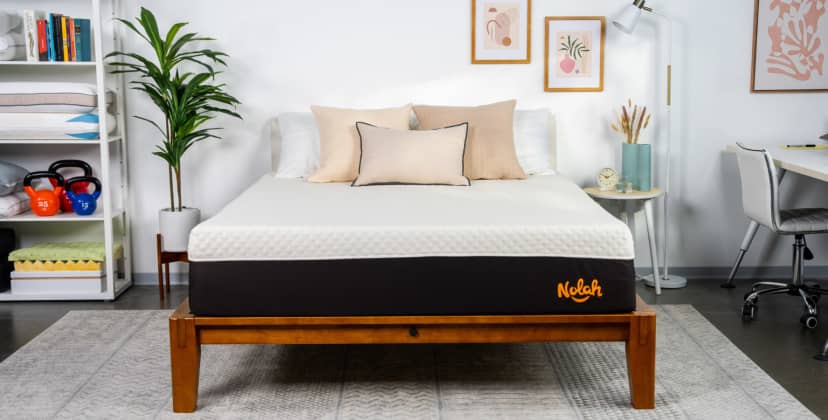
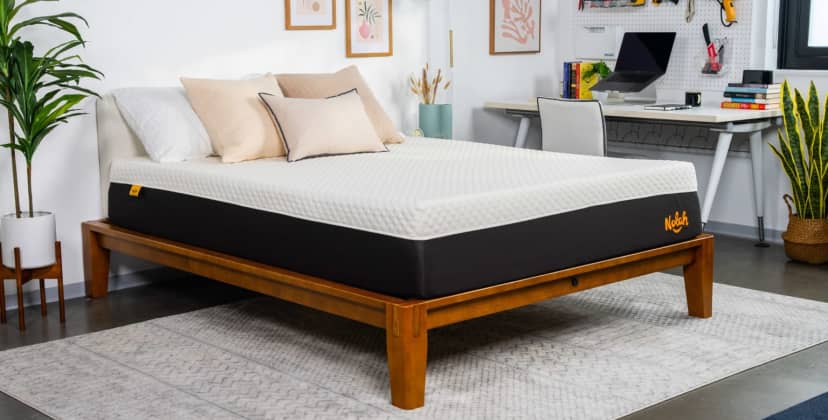
Price
$1,169
Mattress Type
Foam
Firmness Options
Medium (5)
Trial Period
120 nights (30-night requirement)
Full Details
Who It’s Best For
Side sleepers up to 230 pounds should get the contouring they need from the Nolah Signature 12 without sinking too much. The breathable construction is also a solid match for hot sleepers who usually find foam beds too warm.
Feel
AirFoam molds to the body without the deep hug of memory foam, so the Nolah Signature 12 is the best of both worlds for those who need a balance of cushioning and support.
What It’s Made Of
The Nolah Signature 12’s comfort system contains three foam layers, giving the surface an invitingly plush feel. High-density foam in the support core provides decent stability, while the cover is made of breathable organic cotton.
What We Don’t Like
The Nolah Signature may be too loft and lacking in support for side sleepers over 230 pounds, as well as back and stomach sleepers. Edge support is also limited, making it harder to get on and off the mattress.
Scoring & Reviews
The following ratings show how suitable this mattress is for different sleeping positions and sleeper weights. These scores are determined by how well the mattress supports and relieves pressure for each sleeper type.
We performed a meta-analysis on 456 validated customer reviews of the Nolah Signature 12. This is what people who bought the mattress had to say:- Comfort and Support: Many reviewers note that the mattress provides an excellent balance of comfort and support, particularly praising its ability to alleviate hip, back, and shoulder pain.
- Side Sleeper Friendly: Numerous comments highlight the mattress’s effectiveness for side sleepers, offering significant pressure point relief which is a recurrent theme in positive reviews.
- Temperature Regulation: Sleepers appreciate the mattress for not retaining excessive heat, making it suitable for people who sleep hot.
- Initial Odor: A few reviewers mention an initial off-gassing smell upon unpacking the mattress, which is typical with new mattresses. This will dissipate after a few days.
- Edge Support: A minor drawback mentioned is the lack of sufficient edge support, which could be an issue for people who sit on the edge of the bed frequently.
- Customer Service: Positive remarks frequently cite the helpful and responsive customer service, enhancing the overall purchasing experience.
Best for Back Pain
WinkBed
8.9 /10
Test Lab Score
Get $300 off all mattresses at Winkbeds
Get $300 off all mattresses at Winkbeds
Thanks to cushioning comfort layers and sturdy multi-zone coils, the WinkBed is a solid choice for those seeking relief from back pain. You can choose from four firmness levels based on your sleep position, body type, and general preferences.
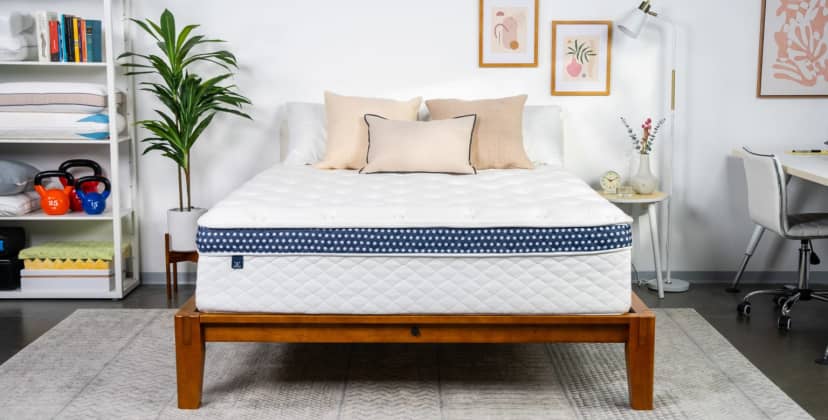

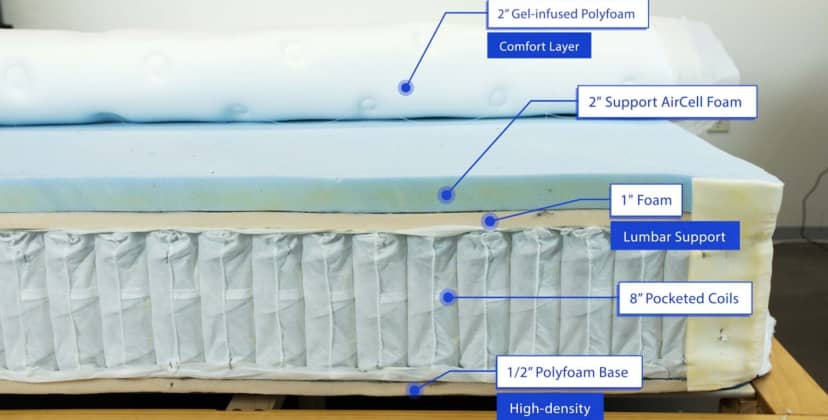
Price
$1,499
Mattress Type
Innerspring
Firmness Options
Medium Soft (4), Medium Firm (6), Firm (7), Firm (8)
Trial Period
120 nights (30 night requirement)
Full Details
Who It’s Best For
Four firmness options make the WinkBed a good match for a wide range of sleepers across different body types and sleep positions. People with upper or lower back pain can benefit from the bed’s targeted coil support.
Feel
The WinkBed contains either polyfoam or zoned latex, depending on which firmness you choose. Either way, you can can expect gentle cushioning and contouring without the hug of traditional memory foam.
What It’s Made Of
The Softer, Luxury Firm, and Firmer WinkBed models have a polyfoam comfort layer, while the Plus contains springy latex. All designs include zoned steel coils that feel more supportive beneath the midsection.
What We Don’t Like
As a hybrid, the WinkBed is on the pricier side. You’ll also need to pay an extra fee if you want to exchange your original mattress for a softer or firmer model during the sleep trial.
Scoring & Reviews
The following ratings show how suitable this mattress is for different sleeping positions and sleeper weights. These scores are determined by how well the mattress supports and relieves pressure for each sleeper type.
We performed a meta-analysis on 8573 validated customer reviews of the Winkbed. This is what people who bought the mattress had to say:- Quality of Materials: The mattress is frequently described as well-made, with durable materials that contribute to a good night’s sleep.
- Cooling Features: Some reviewers mention that the mattress does a good job of regulating temperature, providing a cooler sleep experience.
- Edge Support: While generally satisfied with the support, a few reviewers note that edge support could be better.
- Comfort and Support: Many reviewers praise the mattress for its comfort and support, often mentioning relief from back pain and improved sleep quality.
- Firmness Options: Customers appreciate the variety of firmness options available, finding the right balance for their personal preferences.
- Value for Money: Many users feel the mattress is worth the investment, offering good value for the quality and comfort provided.
- Made in the USA: Buyers are pleased that the mattresses are made in the USA, supporting domestic manufacturing.
Best for Kids
Saatva Youth
8.3 /10
Test Lab Score
15% off orders of $1,000 or more
15% off orders of $1,000 or more
The dual-sided Saatva Youth is intended for kids between the ages of 3 and 11. A gentler surface comfy cushioning for small children transitioning to their first bed, while the firmer side promotes proper spinal alignment for older kids.
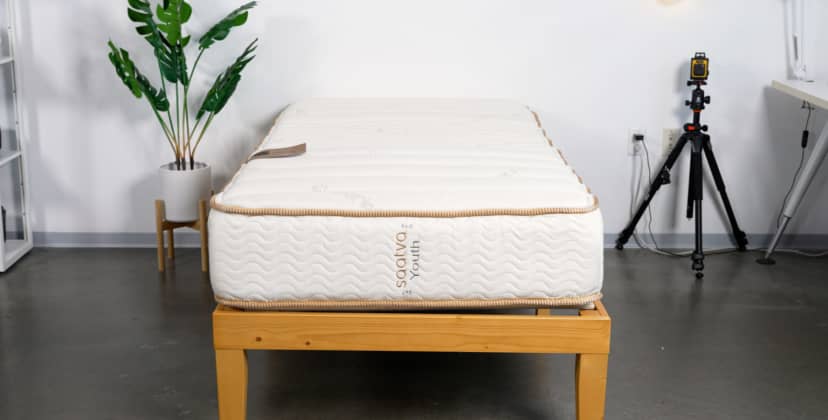

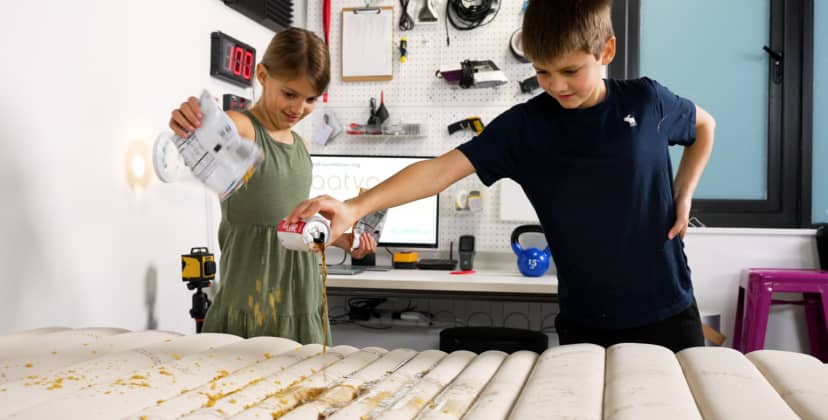
Price
$795
Mattress Type
Innerspring
Firmness Options
Medium (5), Firm (7)
Trial Period
365 Nights ($99 Return Fee)
Full Details
Who It’s Best For
Children between age 3 and 7 should enjoy the softer side, while those between 8 and 11 get the support they need from the firmer side. Waterproof materials on each side also protect the mattress when accidents occur.
Feel
While each side has a distinct feel, the Saatva Youth’s innerspring core gives both surfaces a springy, responsive feel.
What It’s Made Of
The Saatva Youth mattress features a dual-sided design with a five-zone comfort layer for younger children and high-density foam for older ones. A breathable organic cotton cover with a waterproof membrane encases the mattress.
What We Don’t Like
As with other Saatva models, the Saatva Youth might be too pricey for some budget shoppers — especially compared to other kid-friendly beds on the market.
Scoring & Reviews
The following ratings show how suitable this mattress is for different sleeping positions and sleeper weights. These scores are determined by how well the mattress supports and relieves pressure for each sleeper type.
We performed a meta-analysis on 26 validated customer reviews of the Saatva Youth. This is what people who bought the mattress had to say:- Improved Sleep for Children: Parents consistently report that their children sleep better on the Saatva Youth mattress, highlighting improved comfort compared to previous mattresses.
- Comfort and Durability: Customers frequently mention the mattress’s comfort and durability, noting that it holds up well even under adult weight during activities like reading bedtime stories.
- Dual Firmness Feature: The mattress offers different firmness levels on each side, which accommodates growing children’s needs as they age, providing long-term usability.
- Positive Delivery Experiences: Many reviewers highlight the efficiency and friendliness of the delivery service, with quick and smooth delivery being a common theme.
- Customer Service: Saatva’s customer service is frequently praised for being responsive and helpful, particularly in resolving issues like incorrect or problematic deliveries.
- Versatility and Support: Parents appreciate that the mattress supports different weights and sizes comfortably, making it a good choice for both children and occasional adult use.
Best for Bunk Beds
Dreamfoam Essential
7.2 /10
Test Lab Score
25% off sitewide with code: SUMMER25
25% off sitewide with code: SUMMER25
The Dreamfoam Essential is available in a wide range of profiles and sizes, including a handful of twin options for kids who sleep in bunk beds. Approachable pricing and dependable all-foam construction add to the bed’s appeal for parents shopping on a budget.
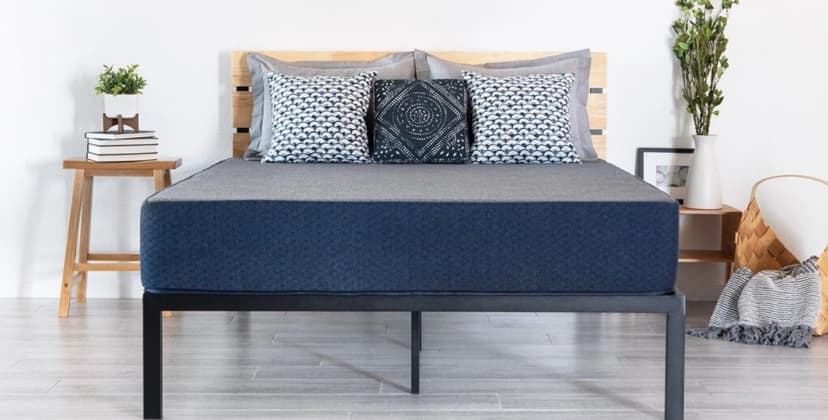
Price
$393
Mattress Type
Foam
Firmness Options
Medium Soft (4), Medium (5), Medium Firm (6), Firm (7), Firm (8)
Trial Period
120 nights (30-night requirement)
Full Details
Who It’s Best For
The Essential is available in five firmness levels, making the mattress a great choice for any sleeper regardless of what they weigh or which position they prefer. For safety reasons, kids sleeping in bunks should use one of the lower-profile options.
Feel
You can choose from Medium Soft (4), Medium (5), Medium Firm (6), Firm (7), and Firm (8), each with a distinct balance of cushioning and support.
What It’s Made Of
The Dreamfoam Essential mattress begins with comfort layers of memory foam, and thicker models also contain transitional polyfoam. All designs feature a high-density foam base and covers made from a poly-spandex blend.
What We Don’t Like
The Dreamfoam Essential’s drawbacks include heat retention, subpar edge support, and strong off-gassing odor when the mattress is new.
Scoring & Reviews
The following ratings show how suitable this mattress is for different sleeping positions and sleeper weights. These scores are determined by how well the mattress supports and relieves pressure for each sleeper type.
We performed a meta-analysis on 4107 validated customer reviews of the Dreamfoam Essential. This is what people who bought the mattress had to say:- Firmness Variety: Offers options ranging from very firm to less firm, catering to different comfort preferences.
- Easy Setup: Customers appreciate the ease of ordering, quick delivery, and simple setup process.
- Comfort Level: The mattresses are frequently described as comfortable, providing a good night’s sleep in various settings like RVs and home use.
- Size Options: Available in various sizes, including narrow and custom dimensions, making it suitable for unique spaces.
- Lightweight: Users noted the mattress is light and easy to move, beneficial for changing sheets or adjusting positions.
- Value: Many reviewers found the mattress to be reasonably priced for the quality and comfort it provides.
Best Dual-Sided
Layla Hybrid
8.3 /10
Test Lab Score
$220 off + 2 free pillows at Layla. Use code: Sleepy20
$220 off + 2 free pillows at Layla. Use code: Sleepy20
With one medium soft (4) and one firm (7) side, the twin-sized Layla Hybrid offers a distinct balance of cushioning and support on each surface. Cooling infusions in the foam layers and steady airflow throughout the coil system also help the mattress excel at cooling and temperature control.
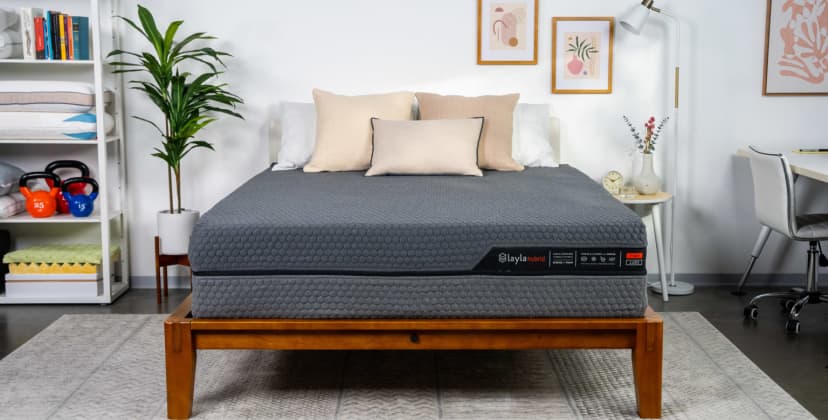
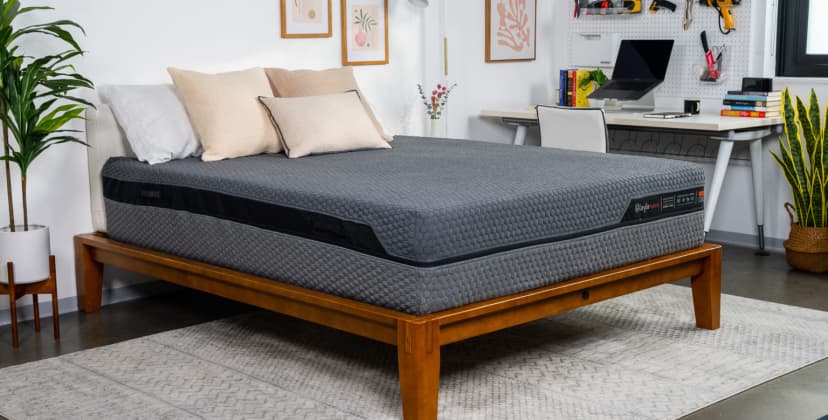
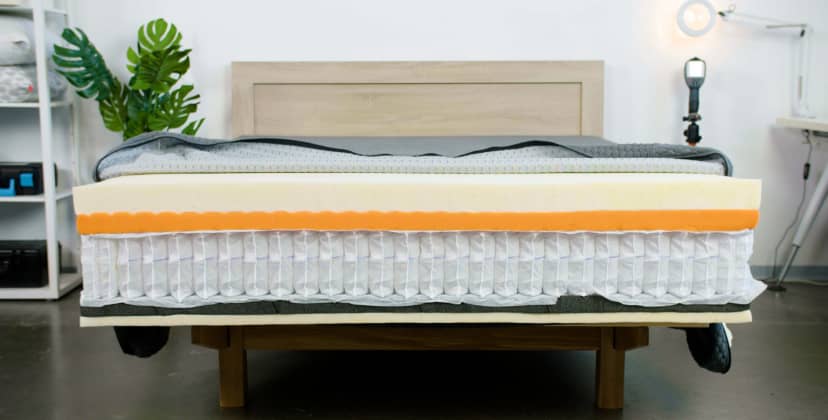
Price
$1,499
Mattress Type
Hybrid
Firmness Options
Reversible: Medium Soft (4), Firm (7)
Trial Period
120 nights
Full Details
Who It’s Best For
The medium soft side is a good match for side sleepers up to 230 pounds, while the firmer surface offers ample support for back and stomach sleepers. Hot sleepers can also benefit from the breathable design.
Feel
The softer side contours closely, creating a deep cradle for your entire body, while the firmer side offers lighter cushioning and more responsiveness. To change the feel, simply flip over the mattress.
What It’s Made Of
Both of the Layla Hybrid’s comfort systems contain memory foam and polyfoam layers. Coils in the shared support core are divided into zones for enhanced support around your midsection.
What We Don’t Like
Strong off-gassing odor can occur when the mattress is new, and the heavy design is difficult to lift and flip without a second person.
Scoring & Reviews
The following ratings show how suitable this mattress is for different sleeping positions and sleeper weights. These scores are determined by how well the mattress supports and relieves pressure for each sleeper type.
We performed a meta-analysis on 1121 validated customer reviews of the Layla Hybrid. This is what people who bought the mattress had to say:- Comfort and Support: Many reviewers mention the mattress provides excellent support and comfort, particularly noting improvements in back and shoulder pain.
- Dual Firmness: The flippable design offering a choice between firm and soft sides is frequently appreciated, allowing users to customize their sleeping experience.
- Quality of Sleep: Numerous comments focus on improved sleep quality, with users reporting deeper sleep and fewer disturbances throughout the night.
- Temperature Regulation: Some reviewers appreciate the mattress’s cooling properties, though a few mention it sleeps warm.
- Shipping and Delivery: Fast and efficient shipping is often noted, although a few had issues with delivery services.
- Weight and Maneuverability: The mattress is noted to be heavy, making it difficult to move or flip without assistance.
- Smell and Off-gassing: A few reviewers mention an initial off-gassing smell that dissipates over time.
- Edge Support: Mixed reviews on edge support, with some noting it could be improved.
Best Organic
Birch Mattress
8.4 /10
Test Lab Score
25% off sitewide + 2 free pillows with mattress purchase
25% off sitewide + 2 free pillows with mattress purchase
The Birch’s latex hybrid design ensures ample bounce on the surface and sturdy, long-lasting support. A medium firm (6) feel and plenty of cooling materials make the mattress an appealing choice for those who prioritize pain relief, breathability, and reinforcement along the edges.
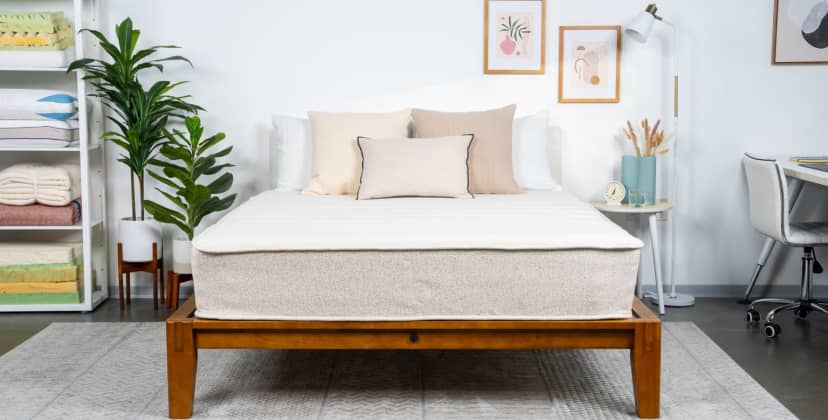

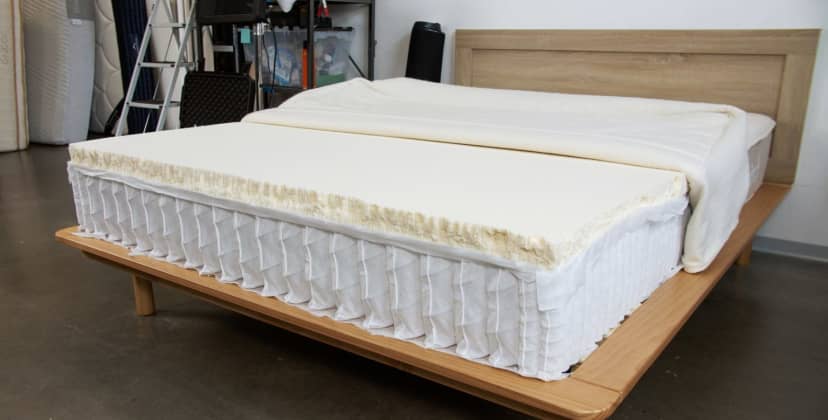
Price
$1,499
Mattress Type
Latex Hybrid
Firmness Options
Medium Firm (6)
Trial Period
100 nights (30-night requirement)
Full Details
Who It’s Best For
The eco-friendly Birch Mattress is a great option for hot sleepers, people with pain or pressure points, and anyone who dislikes the deep hug of foam beds.
Feel
Latex responds to movement with a light bounce, so expect some springiness when you get in and out of bed. Thick coils make the surface exceptionally stable without creating too much stiffness.
What It’s Made Of
The Birch contains two layers of moisture-wicking wool, followed by a latex comfort layer and coil support core. A breathable organic cotton cover completes the eco-friendly design.
What We Don’t Like
People who need close cushioning from their mattress may find the Birch uncomfortable. The bouncy construction can also lead to motion transfer and sleep disruptions for couples.
Scoring & Reviews
The following ratings show how suitable this mattress is for different sleeping positions and sleeper weights. These scores are determined by how well the mattress supports and relieves pressure for each sleeper type.
We performed a meta-analysis on 1917 validated customer reviews of the Birch Mattress. This is what people who bought the mattress had to say:- Comfort and Support: Many reviewers mention the mattress provides excellent support and comfort, particularly noting improvements in back and shoulder pain.
- Dual Firmness: The flippable design offering a choice between firm and soft sides is frequently appreciated, allowing users to customize their sleeping experience.
- Quality of Sleep: Numerous comments focus on improved sleep quality, with users reporting deeper sleep and fewer disturbances throughout the night.
- Temperature Regulation: Several reviewers appreciate the mattress’s cooling properties
- Price: Opinions on the mattress’s price vary, with some finding it a good value and others considering it somewhat expensive.
- Weight and Maneuverability: The mattress is noted to be heavy, making it difficult to move or flip without assistance.
- Smell and Off-gassing: A few reviewers mention an initial off-gassing smell that dissipates over time.
- Edge Support: Mixed reviews on edge support, with some some noting it could be improved.
Best for Guest Rooms
Siena Memory Foam Mattress
7.3 /10
Test Lab Score
50% off the Siena Memory Foam Mattress
50% off the Siena Memory Foam Mattress
The Siena is a budget-friendly all-foam mattress designed for plush comfort, whether you use it on your own bed or in a guest room. Superior pressure relief and motion isolation set this bed apart from competitors in the same price range.
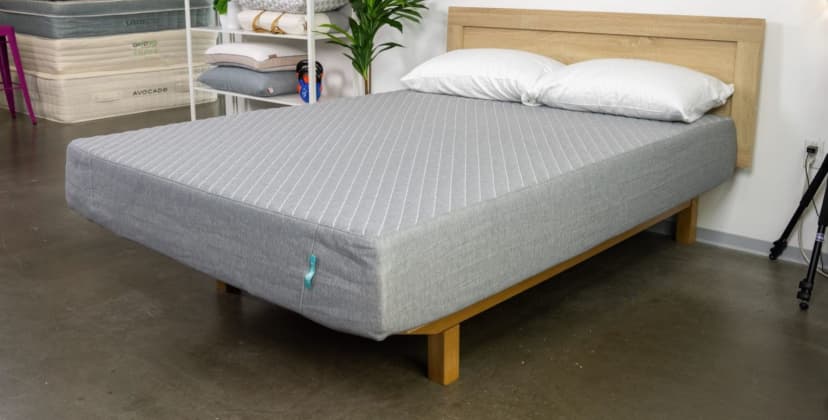
Price
$399
Mattress Type
Foam
Firmness Options
Medium Firm (6)
Trial Period
180 Nights
Full Details
Who It’s Best For
The Siena is a medium firm (6) mattress best suited to side sleepers up to 230 pounds and back and stomach sleepers under 130 pounds. Thick foam layers also help the mattress excel at pain and pressure relief.
Feel
Plush memory foam over dense support layers make the Siena feel quite balanced, with close cushioning beneath the surface and strong overall stability to prevent uncomfortable sinkage.
What It’s Made Of
The Siena mattress starts with adaptive memory foam. A polyfoam transitional layer provides additional cushioning, while the support core contains dense polyfoam.
What We Don’t Like
The Siena may retain some heat, and the perimeter tends to sink when weight is applied. Off-gassing odor is also strong when the mattress is fresh out of the box.
Scoring & Reviews
The following ratings show how suitable this mattress is for different sleeping positions and sleeper weights. These scores are determined by how well the mattress supports and relieves pressure for each sleeper type.
We performed a meta-analysis on 2004 validated customer reviews of the Siena Memory Foam Mattress. This is what people who bought the mattress had to say:- Quality Sleep Improvement: Many users report significant improvements in sleep quality, noting deeper sleep and reduced wakefulness throughout the night.
- Price Value: Many users are impressed with the affordability of the mattress, noting that it offers great value for the price compared to other brands.
- Ease of Setup: Customers appreciate the ease with which the mattress can be set up, highlighting its convenience and user-friendly packaging.
- Temperature Regulation: Several reviews point out that the mattress does a good job of regulating temperature, providing a cool sleeping environment.
- Customer Service: Positive comments about customer service suggest that the company is responsive and helpful in addressing any issues that arise.
- Odor upon Unpacking: A minor drawback mentioned is the initial off-gassing smell common with new memory foam mattresses, but this will dissipate after a couple of days.
Best Overall
Helix Midnight
9.1 /10
Test Lab Score
Up to 30% off + 2 free pillows
Shop NowA standout twin hybrid with balanced construction.
See More Details
Best Value
Nectar Mattress
8.0 /10
Test Lab Score
Up to 40% off mattresses
Shop NowA twin-size foam mattress with high-quality materials and an affordable price.
See More Details
Most Comfortable
Bear Original
7.5 /10
Test Lab Score
35% off + free pillows with code: SF35
Shop NowAn all-foam mattress that feels comfortable and sturdy in equal measure.
See More Details
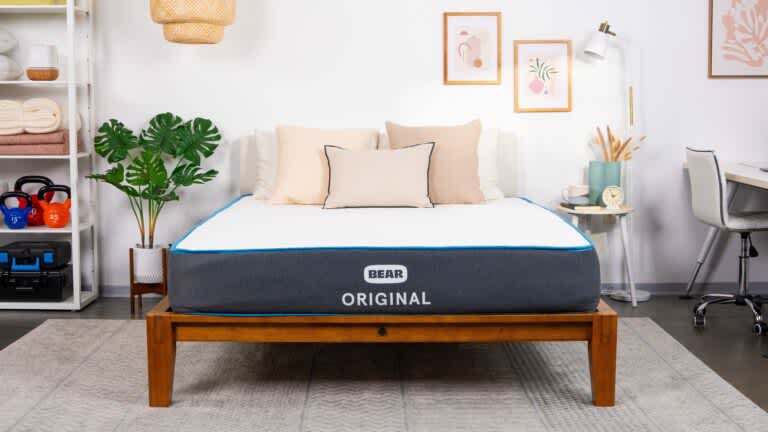
Best for Side Sleepers
Nolah Signature 12
7.9 /10
Test Lab Score
35% off sitewide + 2 free pillows with mattress purchase
Shop NowA breathable, pressure-relieving option for twin mattress shoppers.
See More Details
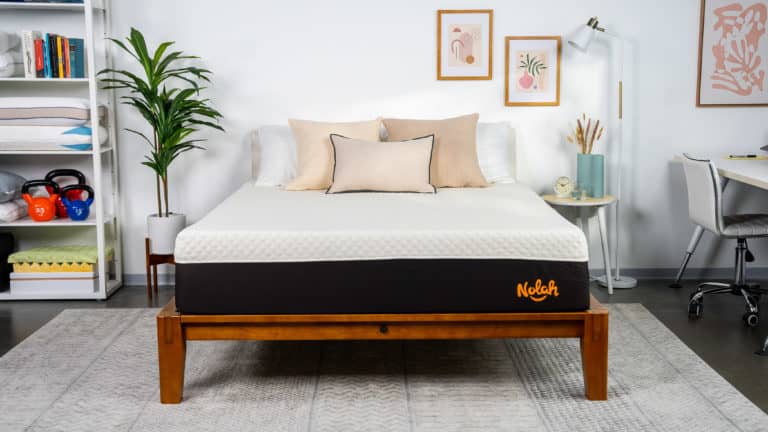
Best for Back Pain
WinkBed
8.9 /10
Test Lab Score
Get $300 off all mattresses at Winkbeds
Shop NowSturdy hybrid construction in a compact twin size.
See More Details
Best for Kids
Saatva Youth
8.3 /10
Test Lab Score
15% off orders of $1,000 or more
Shop NowA reversible kids mattress ideal for twin size bed frames or bunks.
See More Details
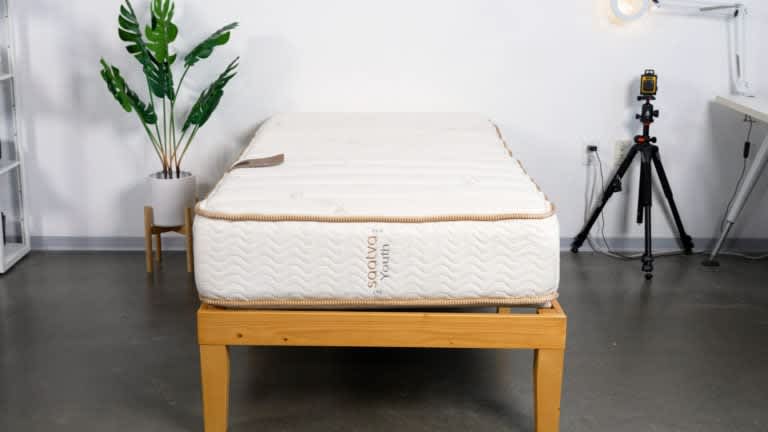
Best for Bunk Beds
Dreamfoam Essential
7.2 /10
Test Lab Score
25% off sitewide with code: SUMMER25
Shop NowA budget-friendly foam mattress ideal for bunks and kids bed frames.
See More Details

Best Dual-Sided
Layla Hybrid
8.3 /10
Test Lab Score
$220 off + 2 free pillows at Layla. Use code: Sleepy20
Shop NowA versatile twin mattress option with soft and firm surfaces.
See More Details
Best Organic
Birch Mattress
8.4 /10
Test Lab Score
25% off sitewide + 2 free pillows with mattress purchase
Shop NowA sustainable, high-end option for twin size mattress shoppers.
See More Details
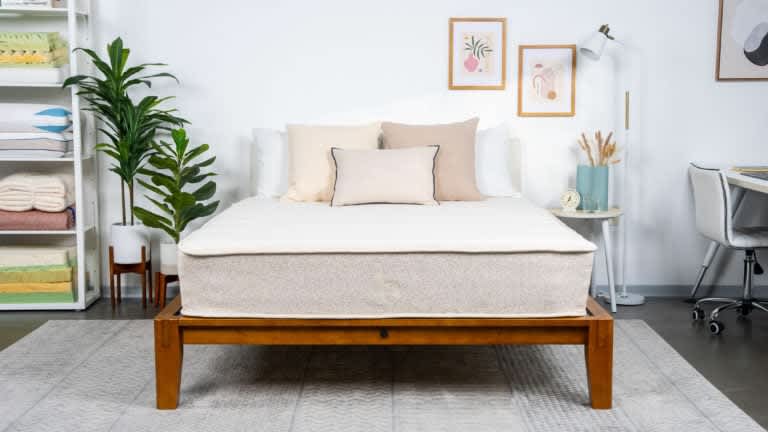
Best for Guest Rooms
Siena Memory Foam Mattress
7.3 /10
Test Lab Score
50% off the Siena Memory Foam Mattress
Shop NowA comfy twin size mattress ideal for your overnight guests.
See More Details
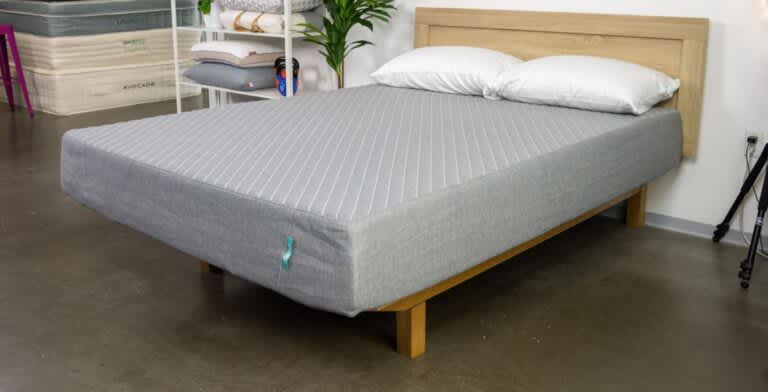
Watch Video: We Tested the Best Twin Mattresses of 2024 – Here Are Our Favorites
Watch the video below to get a more in-depth look at our top picks for Best Twin Mattress.
How We Test: Rigor, Data, and Sleeper Feedback
Every sleeper has unique needs and preferences. We use an objective rating system to help you understand the pros and cons of each mattress, allowing you to make the best purchasing decision based on your personal criteria.
Since there is an established connection between the sleep products you choose and your overall sleep quality, our testing team thoroughly analyzes each mattress to determine who will benefit most from using it. We conduct these hands-on evaluations in our Seattle-based Test Lab using a four-part process, which is outlined below.
Construction analysis: We begin tests for each mattress by making note of firmness, height, layer composition, and other manufacturer specifications. This allows us to determine qualities like durability and overall support.
Product testing: Our team uses cutting-edge tools and technology to evaluate mattresses for motion isolation, pressure relief, temperature control, ease of movement, edge support, and odor potential. These six performance categories are key to our hands-on testing process.
Field testing: In addition to lab-based testing, we use feedback from field testers who use mattresses in their own homes. Data is collected over the course of several weeks to give us insights about each bed’s long-term performance.
User testing: We collect feedback from verified mattress owners through surveys and product reviews. This helps us fine-tune our ratings and ensure they reflect real-world experiences.
Who Should (and Shouldn’t) Sleep on a Twin Mattress?
While twin mattresses offer unique advantages, they’re not for everyone. Here’s our rundown of who may want to consider a twin mattress, and who should go for a larger size.
Who’s a Match:
Twin is the best mattress size for kids, including those graduating from a toddler bed. They also work well for teens under 6 feet tall. Since they are generally more affordable than larger sizes, it’s less expensive to replace them if a child or teen’s sleeping preferences change over time. They’re also often a good choice for budget-conscious shoppers in general.
Adults under 6 feet tall who sleep alone may also want to consider a twin mattress. Because of their compact dimensions, they’re especially useful in living spaces or guest rooms with limited space.
College students who sleep in a dorm often opt for a twin mattress because of space constraints, and because they fit most bunk frames.
Who Should Keep Looking:
On the other hand, twin mattresses do not offer enough space for couples or co-sleepers. Those who sleep with a partner, or even a large pet will be better served by a larger mattress. Also, because of their 75-inch length, sleepers taller than 6 feet will find them too short, and should opt for a twin XL.
What Is the Difference Between a Twin and Twin XL?
A twin XL bed is longer than a normal twin mattress, usually adding 5 extra inches of length. Unlike the twin size, this mattress can comfortably accommodate sleepers over 6-feet tall. The width of both sizes is the same, and neither is meant for more than one sleeper.
| Twin Mattress | Twin XL Mattress |
|---|---|
| 38″ x 75″ | 38″ x 80″ |
What to Consider When Shopping For a Twin Mattress
We’ll walk you through the most important points to consider when shopping for a mattress, and highlight which areas are uniquely important for twin beds.
Your Sleeping Position and Weight
There is no one-type-fits-all mattress. Your body type and preferred sleeping position are two of the most important factors to consider when shopping. They affect how firm the mattress feels to you, and how much support you’ll get from different models.
Firmness and Support
The best mattress firmness for each sleeper varies according to personal taste as well as body type and sleeping position. In fact, both firmness and support are somewhat subjective. For example, a sleeper who weighs less might find a mattress with a medium firm rating very stiff, while a heavier sleeper may find it too soft.
Support refers to how well the mattress promotes spinal alignment. To keep the spine straight, the bed should offer both cushion and responsiveness. Your sleeping position and weight will determine the ideal balance here too.
If you’re buying a twin mattress for a child, keep in mind that younger children (3-7) generally need a firmer mattress for proper spinal support.
Mattress Type and Quality
The most common twin mattress types are foam, latex, innerspring, and hybrid. Each design uses different materials which affect how it performs.
Foam mattresses are constructed using layers of memory foam or polyfoam over a high density foam core. Foam layers typically conform closely to a sleeper’s body, cushioning deeply and helping to relieve pressure on sensitive spots.
The more traditional innerspring design consists of solely coiled springs inside a cover. Hybrid designs use a coiled spring core and latex or foam comfort layers to offer a balance between the contouring cushion of foam and the bounce of an innerspring mattress. In general, modern innerspring mattresses without hybrid design elements are now rare.
Latex mattresses use organic or synthetic latex, providing a bouncier cushion than foam mattresses. These mattresses are often more sustainable, durable, and made from all natural materials.
Budget
If you’re looking to limit your spending on a new bed, twin size mattresses are often the way to go. Twin mattress prices are generally lower than other sizes, so they appeal to shoppers on a budget. That said, their price still varies widely based on the construction and quality of materials.
Edge Support
If you like to sit on the edge of your bed or spread out at night, then edge support matters to you. Edge support refers to how well the bed’s perimeter resists sagging under your body weight. A sturdy perimeter allows you to use the entire surface of the bed, which is especially important on twin mattresses. Strong edge support also makes getting in and out of bed easier.
Sleep Trial and Warranty
Many mattresses now include a sleep trial where you can try out a bed and return it for a full refund if you’re not satisfied. These offers may range from 90 days to an entire year. If you’re on the fence about buying a twin vs. larger size, a sleep trial could be a good way to test the bed in your home. Some companies charge a restocking fee or require that you wait 30 days before making a return, so be sure to check the policy.
Dive Deeper – In-Depth Mattress Guides
If you’re still not sure which mattress is right for you and your home, you can take a look at our mattress guides broken down by size.
Frequently Asked Questions
Twin mattresses measure 38 to 39 inches wide and 75 inches long. This size generally provides enough space for one adult to sleep comfortably, but adults taller than 6 feet may find the mattress too short. Taller sleepers should consider a twin XL, which typically measures 5 inches longer than a normal twin.
Twin mattresses usually have a more affordable price-point than other mattress sizes, and run anywhere from around $200 to well over $1000. Price varies according to quality of materials, construction, and brands. In general, there are plenty of excellent twin mattresses available for under $1,000.
Twin mattresses generally weigh less than other standard mattress sizes, but their weight still varies, ranging from 35 to 90 pounds.
The mattress’ weight depends on its materials and construction. Foam mattresses tend to weigh less, usually between 35 and 50 pounds. Hybrids that use a coiled-spring core range from 60 to 75 pounds. All-latex mattresses are the heaviest type, sometimes weighing upwards of 90 pounds.
Many common bunk bed frames are designed specifically for twin mattresses. However, it’s important to consider the mattress’ profile when purchasing a bunk bed. The U.S. Consumer Product Safety Commission recommends that the top bunk mattress be at least 5 inches shorter than the lengthwise guard rails. Therefore, a low-profile mattress of 6 to 7 inches works best for lofted or elevated bunk beds.
If you put two twin mattresses next to each other, their combined width measures the same as a king size bed, but their length falls short. King beds measure 76 inches wide and 80 inches long, while twin beds measure 38 inches wide and 75 inches long.
Those who want the extra length of a king size bed can put two twin XL mattresses together, which extends the mattress length an extra 5 inches.

Still have questions?
Our product experts have extensive experience testing just about every sleep product on the market.
Send an email to [email protected] with your questions and we’ll help you find exactly what you’re looking for.


